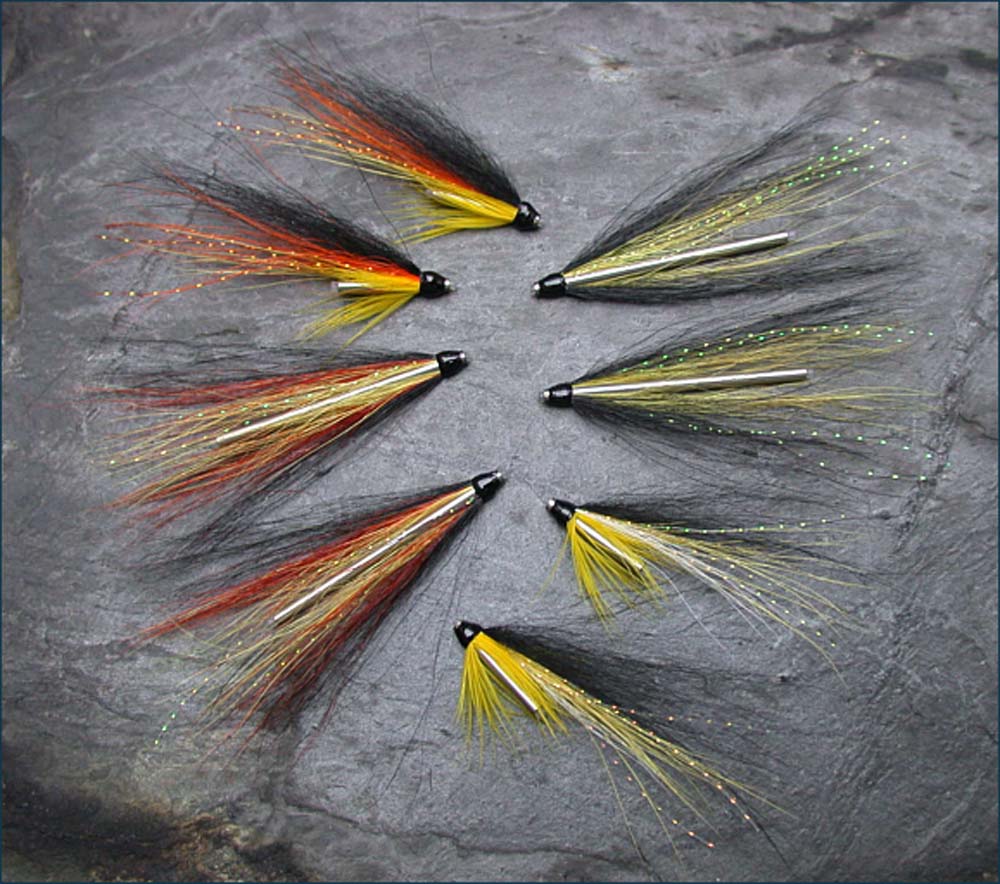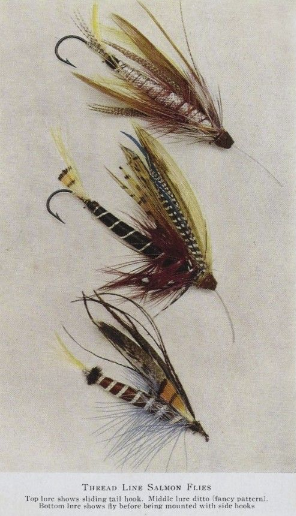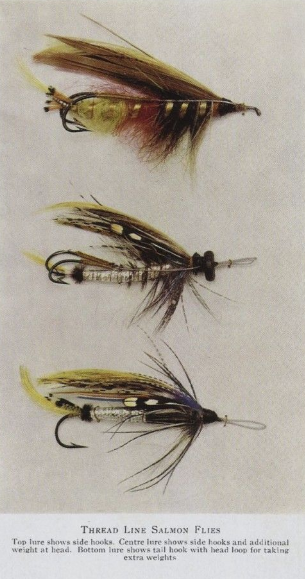
Spring Needle Tube Flies – Black and Green by John Gray.
Tube flies go beyond Atlantic salmon in Europe – especially Scandinavia
By Skip Clement
In 1932, British angler Alexander Wanless wrote The Angler And The Thread Line [Amazon $24]. He argues why the fishing community should use his system of tube flies. Alexander, a spin-fisher, wanted to incorporate the fantastic properties of the tube fly into his type of fishing. To do so, he devised a line of flies that could be fished on a spinning rod.
Wanless explains there are various types of tube flies, some tied with trailing side hooks, tied on tail-shaped lead barrels, and others with stinger-like hooks. Those types of flies all had one thing in common: flies could be big and bushy, but using small hooks significantly reduced the levering effect that long-shanked hooks provided salmon. Alexander describes it this way:
‘It has been observed that the first type of fly is designed so that when a fish is hooked, the fly will slide up the line out of harm’s way or rather to prevent it from levering the small hook out of the salmon’s jaw.’ – — Fishmadman
Let’s hear it for the the lady fly dressers

Left: The Thread Line Salmon Flies: A color plate from The Angler And The Thread Line by Alexander Wanless. Book published 1932. Fishmadman
Tube flies have become a steady diet for European fly fishers since Minnie Morawski, a fly-dresser from Aberdeen, Scotland, made the first Atlantic salmon tube flies in 1945. Tail bitters like Salmo salar [brown trout] became hooked.

To the right: Color plate from The Angler And The Thread Line, showing other flies from the Thread Line Salmon Series. Top two with detachable hooks, the middle one with added weight enabling the angler to fish it on his light spinning gear. [Fishmadman]
Today, because of the much higher populations of Salmo Salar in the Canadian Maritimes and throughout Scandinavia, Atlantic salmon are tube-fished [skated or swung]. In addition, steelhead trout and Pacific salmons are the tube fly country for the Northwest U.S., western Canada, and, more recently Alaska, but more than a decade ago.
However, currently, and surprisingly, east of the U.S. divide, excluding the Great Lakes and offshore bill fishers, tube flies remain a novelty to far too many anglers who only rely on hook-tied flies, even when a clear disadvantage. Losing in that limitation, a much better hookup and catch ratio.
Today’s tube product manufacturers’ products no longer only incentivize tying large streamer-like flies but much smaller flies—even nymphs to emergers. Also, dry flies on smaller diameter tubes are no more complicated than tying on a hook. The latter is likely the reason why tubes remain a stumbling block for the fly-tying community.
Newcomer in Georgia
My fly-tying club was introduced to tube flies by a migrant from Florida, moi, in the fall of 2014. As a result, my fellow tyers have moved beyond my ten-thumb tying, expressing their superior talent – moving us all into better catch with micro tubes for trouts, crappie, and the Georgia basses.
With tubes, an angler can put them in their pocket, and the day’s hooks can be kept in Ziploc® bags. Then, use the hooks chosen to better fish and decide how to fish them: hook eye up, hook eye down, or use them as stingers.

